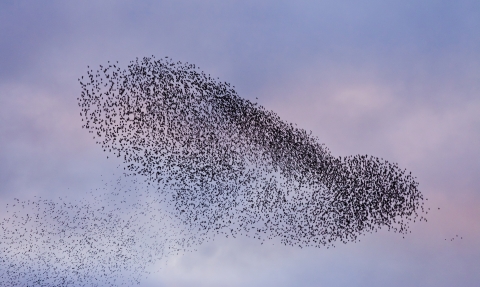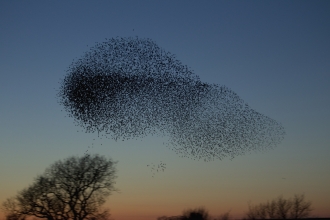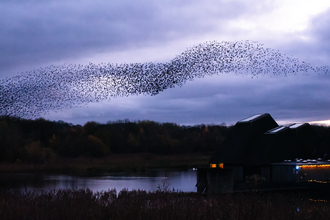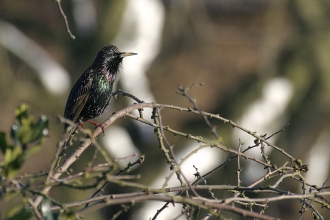
Guy Edwardes/2020VISION
Starling Murmuration
What are they?
During the winter months, large numbers of starlings visit Britain from the continent, seeking out the relative warmth of our island climate. As dusk arrives, the starlings set off for their communal roost in one of the most staggering natural spectacles of all. Flocks arrive from all directions, gathering in the skies above their roost sites. As the numbers reach into the tens and hundreds of thousands, the ‘murmurations’ (the name for a flying flock of starlings) take on incredible shapes in the sky, contracting and expanding as one flock merges into another, and taking on a life of their own; swirling back and forth in ever more complex and beautiful patterns.
It's basically a mass aerial stunt - thousands of birds all swooping and diving in unison. It's completely breathtaking to witness.
We think that starlings do it for many reasons. Grouping together offers safety in numbers – predators such as peregrine falcons find it hard to target one bird in the middle of a hypnotising flock of thousands.
They also gather to keep warm at night and to exchange information, such as good feeding areas.
Where can I see them?
Walk along the river and you may see the flocks coming in from all directions swirling and turning before they land in the reeds.
Wrap up warm. Really warm. It can get surprisingly chilly standing waiting by a wintery reedbed, but it will be worth it, we promise. Arrive at least half an hour before the sun goes down, or even a bit earlier, and find a good vantage point where you can see both the roost site and the sky above. After you’ve had your fill and the last bird has dropped in to go to sleep, you can go back to that warm fire and cosy home. You may feel the cold, but we challenge you not to feel warm inside after a wondrous murmuration.
Did you know?
The starling population has fallen by more than 80 per cent in recent years, meaning they are now on the critical list of UK birds most at risk.






